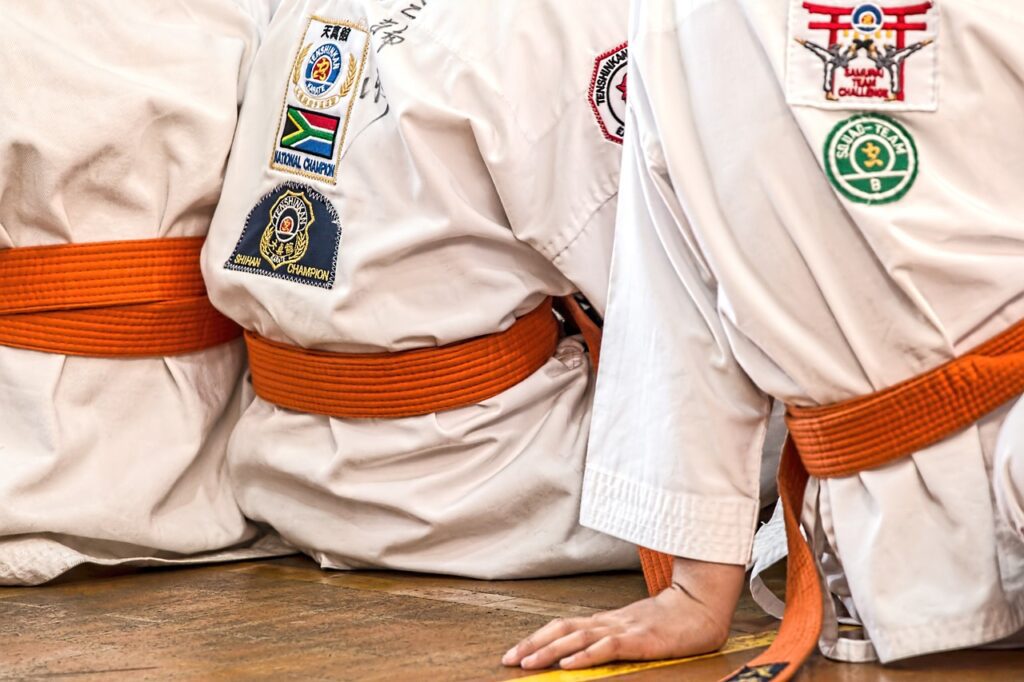In the world of martial arts, mastering your striking techniques is crucial for success. One technique that stands out from the rest is utilizing angles for superior striking. By understanding how to position your body and adjust your angles, you can gain a significant advantage over your opponent. This article will explore the importance of utilizing angles in striking and provide practical tips on how to incorporate them into your martial arts training. Whether you’re a beginner or an experienced practitioner, this article will help you enhance your striking skills and become a more formidable competitor.
Understanding Angles
Angles play a crucial role in striking techniques, determining the power and accuracy of your strikes. By understanding the importance and different types of angles in striking, you can enhance your overall effectiveness in combat.
Importance of angles in striking
Angles have a significant impact on the power and accuracy of strikes. When you attack from different angles, you catch your opponent off guard, making it harder for them to defend against your strikes effectively. By utilizing angles, you can generate more power and increase your chances of landing clean, devastating blows.
How angles affect power and accuracy
Angles greatly influence the power and accuracy of your strikes. By positioning yourself at specific angles, you can generate more force behind your strikes. For example, throwing a punch directly at your opponent’s guard may result in a less powerful impact compared to throwing the same punch at an angle, where the force is directed towards a weaker or less defended area. Additionally, striking at angles enhances accuracy by allowing you to find openings in your opponent’s defense and hit your target more precisely.
Different types of angles in striking techniques
There are various types of angles that can be utilized in striking techniques. Diagonal angles, such as a 45-degree angle, are effective for surprising opponents and creating openings. Lateral angles, on the other hand, involve moving to the side of your opponent to attack from a different line of sight. By understanding the different types of angles, you can strategically select the most suitable one for each situation.
Footwork and Angles
Proper footwork is essential for creating angles in striking. By maintaining the right footwork, you can effectively position yourself to attack from a favorable angle. This involves stepping and pivoting, allowing you to generate momentum and power in your strikes. By mastering footwork, you can enhance your striking efficiency and ensure that you are always in the optimal position to unleash devastating strikes.
How footwork enhances striking efficiency
Footwork is the foundation of striking efficiency. It allows you to generate power from the ground up, transferring the force seamlessly into your strikes. By using proper footwork, you can also maintain balance and stability, which is crucial for executing strikes with precision and speed. Without proper footwork, your strikes may lack power and accuracy, making it easier for your opponent to anticipate and defend against your attacks.
Positioning and pivoting for generating angles
Positioning and pivoting are key components of generating angles in striking techniques. Positioning yourself at favorable angles relative to your opponent allows you to exploit their weak points and increase the chances of landing clean strikes. Pivoting, on the other hand, involves turning your body to face your opponent from a different angle, opening up new opportunities for attack. By mastering these techniques, you can effectively utilize angles to outmaneuver and outstrike your opponents.
Attack Angles
Using attack angles strategically can catch your opponents off guard and create opportunities for successful strikes. Diagonal and lateral angles are particularly effective in surprising opponents and opening up their defenses.

Using diagonal and lateral angles to surprise opponents
Diagonal angles, such as attacking from a 45-degree angle, can create unexpected openings. Instead of attacking directly in front of your opponent, you shift to the side and attack from an angle that they may not anticipate. This sudden change in attack angle creates confusion and reduces the likelihood of your strikes being effectively defended.
Lateral angles involve moving to the side of your opponent to attack from a different line of sight. This provides an advantage as it makes it more difficult for your opponent to predict and react to your strikes. By attacking laterally, you can exploit their blind spots and find openings that may not be easily defended against.
Strategic selection of attack angles based on opponent’s position
The selection of attack angles should be based on your opponent’s position and defense. By assessing their stance and movements, you can identify vulnerabilities and determine the most effective attack angle. For example, if your opponent tends to keep their guard high, attacking from a lower angle can expose their midsection or legs. Adjusting the attack angle based on the opponent’s position ensures that you are targeting their weak points and maximizing your chances of successfully landing strikes.
Exploiting weak points with angular attacks
Angles can be used to exploit weak points in your opponent’s defense. By attacking from angles where their guard may be weaker or less effective, you increase the chance of successfully landing strikes and causing damage. For example, if your opponent tends to protect their head, attacking from lower angles can target their body or legs, which may be less defended. By understanding your opponent’s weaknesses and capitalizing on them with angular attacks, you can significantly enhance your striking effectiveness.
Defense Angles
Angles also play a crucial role in defense. By utilizing effective angles, you can avoid strikes more efficiently and counterattack when the opportunity presents itself.
Effective angles for avoiding strikes
Effectively utilizing angles in defense allows you to avoid strikes more efficiently. By moving to the side or stepping back at the right moment, you can evade your opponent’s attacks and minimize the chances of getting hit. By understanding the desired defensive angles for different types of strikes, you can improve your defensive capabilities and avoid unnecessary damage in a fight.
Defending against different types of attacks using angles
Angles can be utilized to defend against various types of attacks. For example, by utilizing lateral angles, you can sidestep punches or kicks, making it difficult for your opponent to connect with their strikes. By positioning yourself at diagonal angles, you can avoid direct punches or kicks while positioning yourself for counterattacks. Understanding the angles involved in different attacks allows you to effectively defend yourself and maintain a strong defensive position.
Counterattacking from defensive angles
Defensive angles can also provide opportunities for counterattacks. When you evade an opponent’s strike and find yourself in a favorable angle, you can quickly launch a counterattack while they are off balance or recovering from the missed strike. By utilizing defensive angles effectively, you can turn defense into offense and seize the initiative in a fight.
Combination Strikes with Angles
Combining strikes with angles amplifies their effectiveness and can overwhelm opponents. By seamlessly transitioning between different attack angles, you can keep your opponents guessing and maximize the impact of your strikes.

Creating angles between multiple strikes
By utilizing angles during combinations, you can create new openings between each strike. Instead of attacking from the same angle repeatedly, transitioning between different angles confuses your opponent and prevents them from adapting to your strikes effectively. This continuous change in attack angles increases the chances of landing multiple strikes and significantly increases the overall impact.
Seamlessly transitioning between different angles
Seamlessly transitioning between different angles requires precise footwork and timing. As you execute each strike, you must position yourself for the next strike by adjusting your footwork and body positioning. This ensures that you maintain the element of surprise and catch your opponent off guard with each angle change. Training and practicing combinations that involve angle transitions will allow you to smoothly flow between strikes and optimize your offensive capabilities.
Maximizing impact with angle-based combinations
By incorporating angles into your combination strikes, you can maximize their impact. Each strike from a different angle adds a unique element to the combination, increasing the chances of penetrating your opponent’s defense and causing significant damage. The combination of angles and strikes creates a well-rounded offensive approach that can overwhelm opponents and give you the upper hand in combat.
Feints and Angles
Feints and angles work hand in hand to deceive opponents and create opportunities for angled strikes. By utilizing feints strategically, you can trigger reactions from your opponents, opening up vulnerabilities that can be exploited with well-timed angled strikes.
Using feints to deceive opponents and create openings for angled strikes
Feints are fake attacks designed to provoke a response from your opponent. By executing a feint, you can make your opponent react defensively or shift their focus to defending against a non-existent strike. This creates openings for angled strikes as your opponent’s guard may be momentarily compromised or focused on the wrong direction. By combining feints with angle-based strikes, you can capitalize on the openings created and increase your chances of success.
Feinting to set up attacks from unexpected angles
Feinting can also be used to set up attacks from unexpected angles. By feinting in one direction and quickly shifting to attack from a different angle, you can catch your opponent off guard and increase the chances of landing a clean strike. This element of surprise can disrupt your opponent’s defense and allow you to exploit openings that may not have been present otherwise.
How feints and angles work together for superior striking
The combination of feints and angles creates a dynamic and unpredictable striking style. By utilizing feints to deceive and manipulate your opponent’s reactions, you can create openings for angled strikes and increase your chances of success. This combination forces your opponent to constantly second-guess their defense, making it harder for them to anticipate and effectively counter your attacks. By mastering the use of feints and angles, you can elevate your striking game to a superior level.
Angles in Different Fighting Styles
Angles are a fundamental aspect of various fighting styles, including boxing, Muay Thai, kickboxing, and MMA. Each style incorporates angles in its striking techniques to maximize effectiveness and create favorable opportunities.

Angle utilization in boxing
Boxing relies heavily on angling to create openings and effectively land punches. By utilizing lateral and diagonal angles, boxers can outmaneuver their opponents, find openings in their defense, and deliver powerful strikes. Footwork and precise positioning are crucial in boxing to maintain favorable angles and seize advantageous positions.
Angles in Muay Thai and kickboxing
In Muay Thai and kickboxing, angles play a significant role in evading strikes and delivering powerful kicks and knees. By utilizing lateral angles, fighters can exploit their opponent’s blind spots and successfully execute strikes without being easily countered. Footwork and pivoting are vital in Muay Thai and kickboxing to generate power and create the necessary angles for effective strikes.
Incorporating angles in MMA striking techniques
In MMA, striking techniques incorporate angles to take advantage of the hybrid nature of the sport. By combining elements from various disciplines, MMA fighters can utilize angles to surprise their opponents and transition between striking and grappling seamlessly. Understanding and utilizing angles in MMA enhances a fighter’s overall arsenal and keeps opponents guessing, leading to a more well-rounded and effective striking game.
Training Drills for Angles
Training drills focusing on angles are essential to develop and refine your angle-based striking skills. Shadowboxing, partner drills, and bag work can all be utilized to practice and improve your ability to effectively utilize angles in combat.
Shadowboxing for angles
Shadowboxing allows you to practice and visualize various angles in striking techniques. By throwing strikes from different angles and imagining an opponent’s reactions, you can build muscle memory and train your mind to think in terms of angles during combat. Shadowboxing drills focusing on angles can be incorporated into your regular training routine to improve your striking effectiveness.
Partner drills for practicing angle-based striking
Partner drills provide a realistic training environment for practicing angle-based striking. By working with a partner, you can simulate real fighting scenarios and practice implementing angles in your strikes. This can include drills where you and your partner take turns attacking and defending, utilizing different angles to challenge each other’s defenses and create opportunities for strikes.
Bag work and pad drills focusing on angles
Bag work and pad drills offer a controlled environment to practice generating power and accuracy from different angles. By striking the bag or pads from various angles, you can refine your technique and develop the necessary coordination and timing required to effectively utilize angles in combat. These drills help to build the muscle memory necessary for seamless transition between different angles during live combat.
Mental Aspects of Angle Utilization
Angle utilization is not just physical; it also requires mental agility and situational awareness. Developing the mental aspects of angle utilization enhances your ability to recognize and exploit openings in real-time during combat.
Developing fight IQ to recognize and exploit angles
Fight IQ refers to the ability to assess and adapt to the dynamics of a fight. Developing a high fight IQ enables you to recognize patterns, vulnerabilities, and opportunities for angled strikes. By studying and analyzing different fighters’ styles and tendencies, you can expand your fight IQ and gain a deeper understanding of how to effectively utilize angles in different situations.
Visualization techniques for better understanding of angles
Visualization is a powerful tool for better understanding angles and their application in combat. By visualizing yourself executing strikes from different angles and imagining their effectiveness, you can enhance your understanding of how angles can be applied in real fights. Visualization techniques can be practiced during training or as part of your mental preparation before a combat situation.
Adapting and adjusting angles during live combat
The ability to adapt and adjust angles during live combat is crucial for successful angle utilization. As the dynamics of a fight change, so do the opportunities for angles. Adapting to your opponent’s movements, creating new angles, and adjusting your striking approach in real-time is a skill that separates exceptional fighters from the rest. Regular sparring and competition provide the necessary experience to develop this ability and become proficient in adapting and adjusting angles during combat.
Mastering Angle Utilization
Mastering angle utilization requires dedication, guidance, and consistent practice. By seeking guidance from experienced coaches and trainers, engaging in consistent practice, and studying fighters known for their exceptional angle utilization, you can refine your skills and take your striking game to new heights.
Seeking guidance from experienced coaches and trainers
Experienced coaches and trainers can provide valuable insights and guidance on angle utilization. Their expertise and knowledge can help you develop the technical skills and strategic mindset necessary for effective angle-based striking. Seeking their guidance and feedback allows for personalized instruction and accelerated progress in mastering angle utilization.
Consistent practice and refinement of angle-based striking
Consistent practice is essential for mastering angle utilization. Regularly incorporating angle-based striking drills and techniques into your training routine allows you to refine your skills and develop the necessary muscle memory. By dedicating time and effort to practice, you can gradually improve your ability to effectively utilize angles in combat.
Analyzing and learning from fighters known for their exceptional angle utilization
Studying and analyzing fighters who are known for their exceptional angle utilization can provide invaluable insights for your own development. By observing their techniques, strategies, and mindset, you can gain a deeper understanding of how angles can be utilized in different situations. This knowledge can be applied to your own training and enhance your overall striking proficiency.
In conclusion, understanding and utilizing angles in striking techniques is essential for superior striking. By recognizing the importance of angles, perfecting footwork, and incorporating angles into your combination strikes, you can enhance your striking power, accuracy, and overall effectiveness in combat. Through consistent practice, mental preparation, and learning from experienced fighters, you can master angle utilization and further elevate your striking game. So, embrace the power of angles and unlock your full striking potential!

